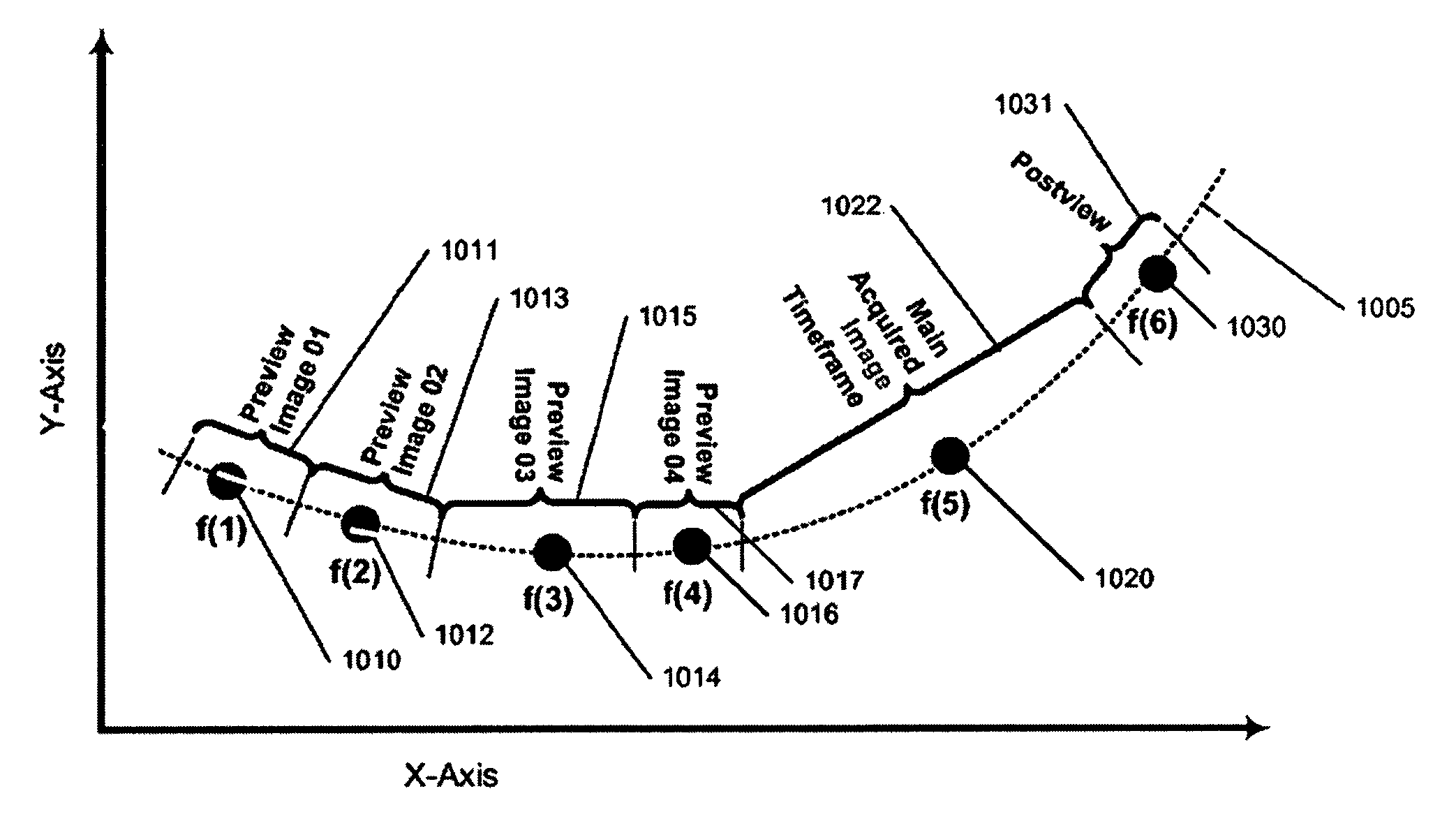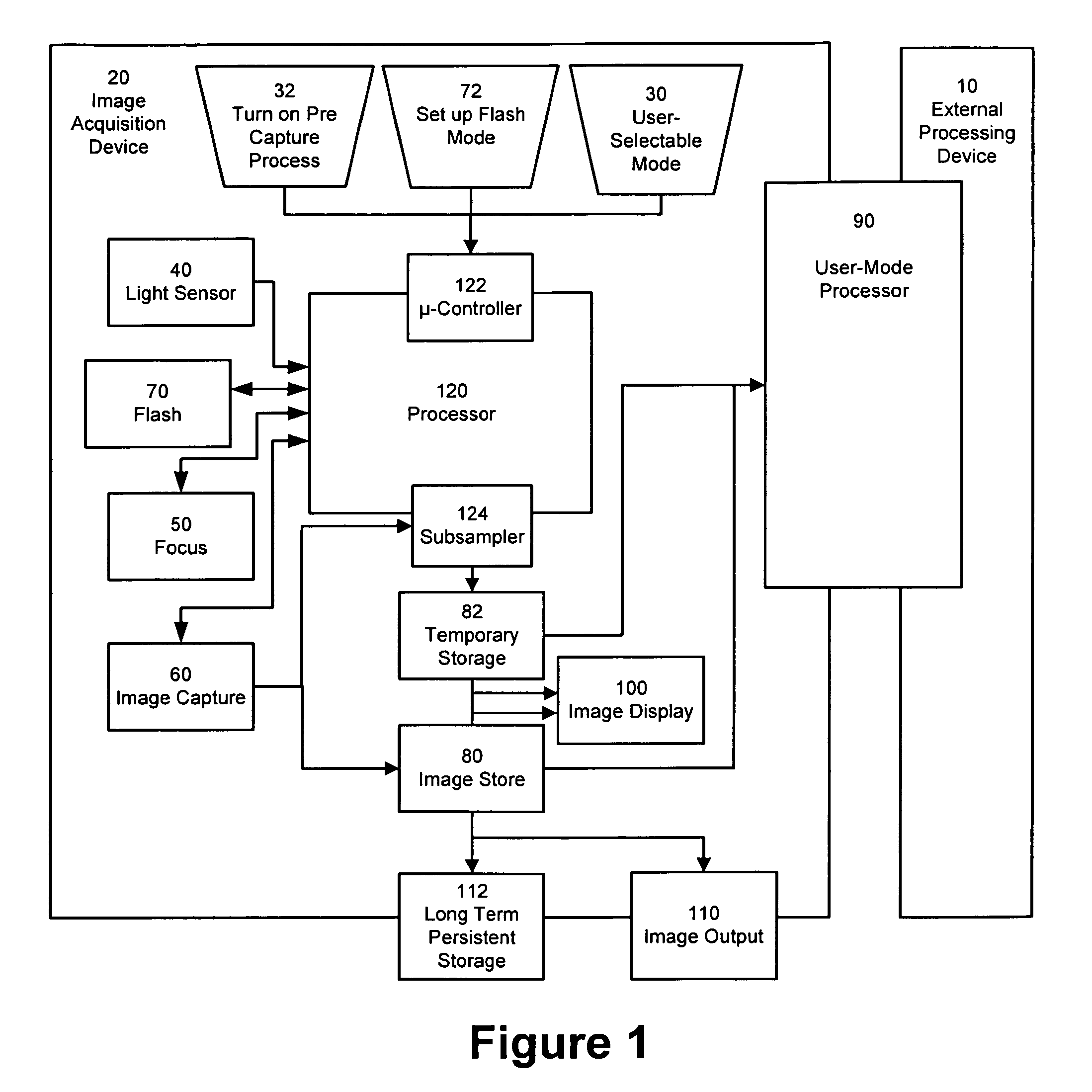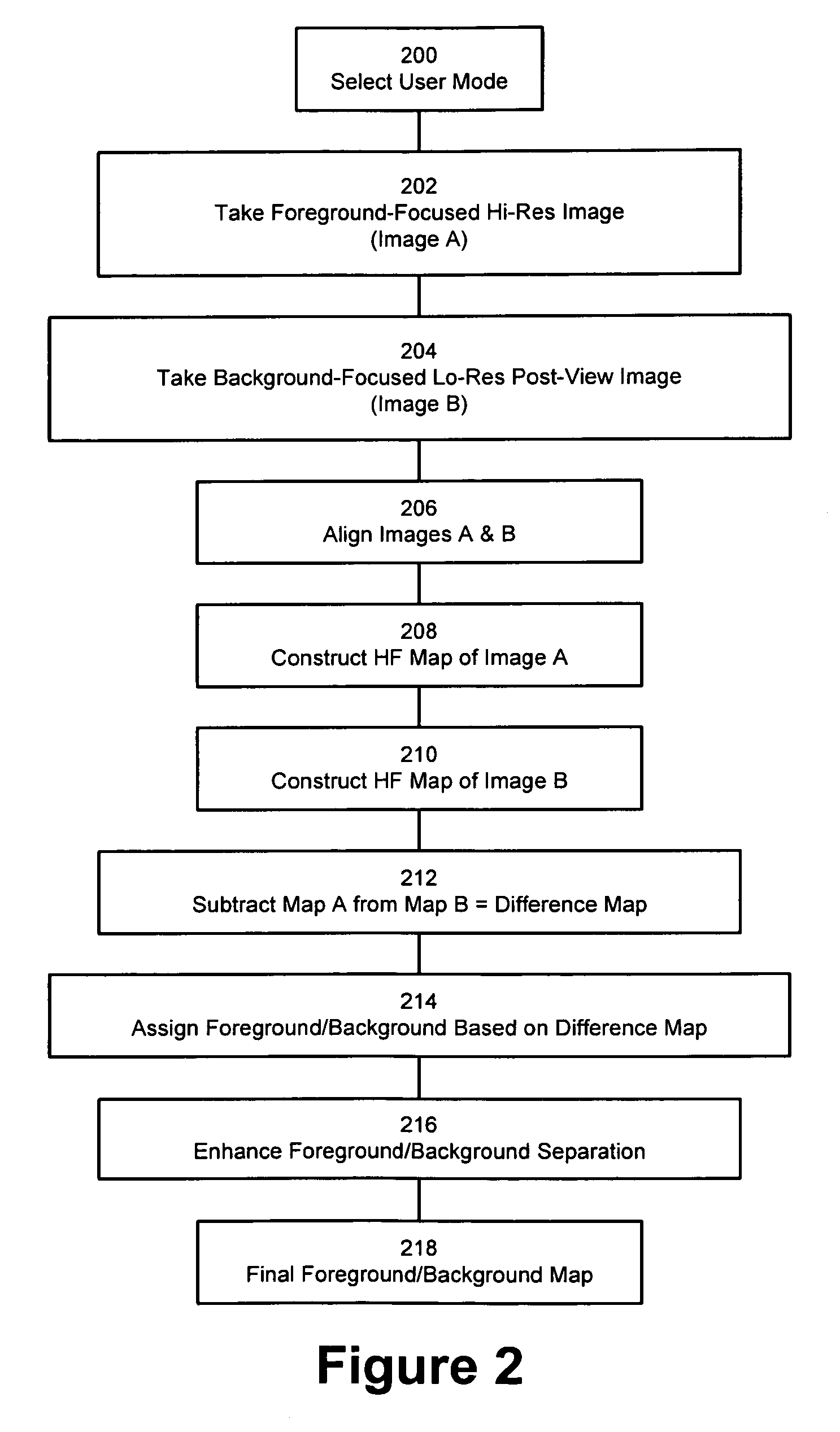Method of gathering visual meta data using a reference image
a reference image and meta data technology, applied in image enhancement, television systems, instruments, etc., can solve the problems of not providing reliable distinction between foreground and background regions of images, flash and non-flash versions of images may not provide sufficient discrimination, and represent a substantial additional processing overhead, so as to achieve spatial economy and performance efficiency
- Summary
- Abstract
- Description
- Claims
- Application Information
AI Technical Summary
Benefits of technology
Problems solved by technology
Method used
Image
Examples
third embodiment
[0159]FIG. 5 is an alternative embodiment, wherein the classifiers are rotated as opposed to the images. By doing so, even if the results are similar, the execution time is highly optimized because the process is preferably not repeated over three images, and is instead performed over only a single image with two, three or more times the number of classifiers. Preferably, two sets of rotated classifiers are used along with an unrotated set. According to FIG. 5, the classifiers loaded at block 408 are rotated at block 460 to create counter clockwise classifiers 462, original classifiers 464 and clockwise classifiers 466. As explained above, if desired, a fourth set of classifiers 468 of 180 degree rotation can be generated, and in fact, any number of classifier sets may be generated according to rotations of arbitrary or selected amounts in accordance with alternative embodiments of this invention. In a third embodiment, both the image and the classifiers may be rotated.
[0160]The cla...
embodiment 500
[0173]A description of two different methods of calculating PSF is provided with reference to FIGS. 7a-7b. FIG. 7a shows an embodiment 500 for extracting a PSF using a single preview image. In this embodiment, the input is the finally acquired full resolution image 511, and a saved preview image 512. Prior to creating the PSF, the preview and final image have to be aligned. The alignment can be a global operation, using the entire images, 511 and 512. However, the two images may not be exact for several reasons.
[0174]Due to the fact that the preview image and the final full resolution image differ temporally, there may not be a perfect alignment. In this case, local alignment, based on image features and using techniques known to those skilled in the art, will normally be sufficient. The process of alignment may be performed on selected extracted regions 520, or as a local operation. Moreover, this alignment is only required in the neighborhood of the selected region(s) or feature(s...
PUM
 Login to View More
Login to View More Abstract
Description
Claims
Application Information
 Login to View More
Login to View More - R&D
- Intellectual Property
- Life Sciences
- Materials
- Tech Scout
- Unparalleled Data Quality
- Higher Quality Content
- 60% Fewer Hallucinations
Browse by: Latest US Patents, China's latest patents, Technical Efficacy Thesaurus, Application Domain, Technology Topic, Popular Technical Reports.
© 2025 PatSnap. All rights reserved.Legal|Privacy policy|Modern Slavery Act Transparency Statement|Sitemap|About US| Contact US: help@patsnap.com



